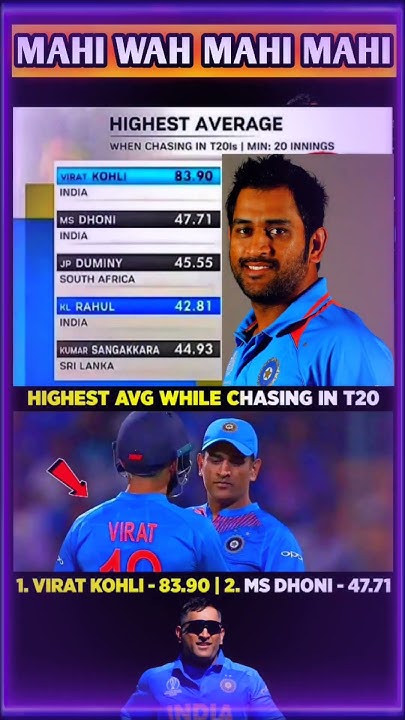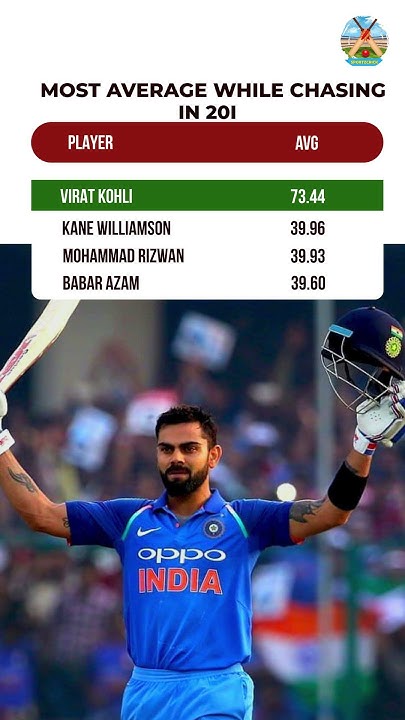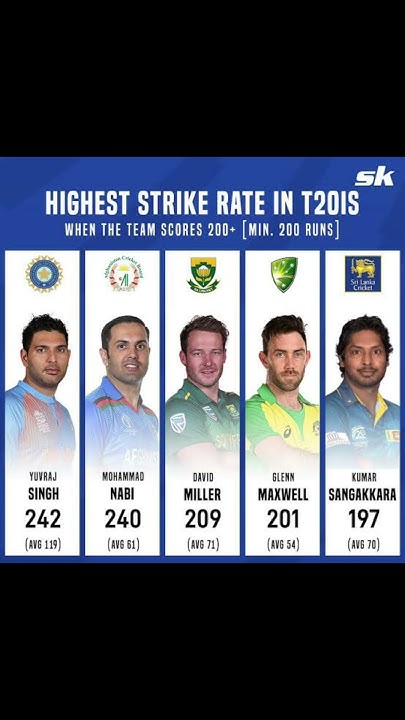Highest Average In T20 While Chasing

In the high-octane world of Twenty20 cricket, where boundaries are frequently cleared and fortunes can change in a single over, one statistic stands out as a testament to a batsman's composure and calculated aggression: the average while chasing. The ability to maintain a high average when under pressure to overhaul a target separates the good from the great.
This article delves into the elite echelon of T20 batsmen who boast the highest averages while chasing. It scrutinizes the data, explores the factors contributing to their success, and examines the implications for their teams. We’ll explore what makes these players so successful and analyze if their achievements correlate with team victories.
The Elite List: Batting Averages in Chases
According to data compiled from reputable cricket statistics websites like ESPNcricinfo and Howstat, several batsmen have consistently demonstrated exceptional prowess in chasing down targets. The list is constantly evolving with each game, but consistently features names like Virat Kohli and Babar Azam.
These players are not merely accumulating runs. They are constructing innings with purpose and precision when the stakes are at their highest. Their averages reflect a remarkable blend of skill, temperament, and tactical awareness.
What Makes a Successful Chaser?
Several factors contribute to a batsman's success in chases. Firstly, the ability to assess the required run rate and adjust the scoring tempo accordingly is crucial. A successful chaser knows when to accelerate and when to consolidate. Secondly, maintaining composure under pressure is paramount.
The pressure of the scoreboard can cripple even the most experienced players. Thirdly, a strategic approach to targeting bowlers and exploiting fielding weaknesses is essential. The best chasers can identify opportunities and capitalize on them.
Data Analysis and Key Insights
Analyzing the data reveals some interesting trends. Batsmen with high averages in chases often possess strong strike rates, indicating a proactive approach to scoring. They also tend to have a good understanding of their own strengths and weaknesses.
This allows them to play to their strengths and minimize risks. Furthermore, many successful chasers have a history of playing under pressure in other formats of the game. This experience prepares them for the challenges of T20 chases.
Correlation with Team Success
Does a high average while chasing translate to team success? The answer is nuanced. While a reliable chaser is undoubtedly a valuable asset, cricket is a team sport. One player's brilliance cannot guarantee victory.
Other factors, such as the strength of the bowling attack, the quality of the fielding, and the overall team strategy, all play a crucial role. However, the presence of a batsman who can consistently deliver under pressure can significantly increase a team's chances of success.
Perspectives from the Cricket World
Former cricketers and analysts often emphasize the importance of mental fortitude in chasing.
"Chasing requires a different mindset," says Ian Bishop, a respected cricket commentator. "You need to be able to block out the noise and focus on the task at hand."
Coaches often focus on instilling confidence and providing batsmen with clear roles and responsibilities. "We encourage our players to embrace the challenge of chasing," says a prominent team coach. "We want them to see it as an opportunity to showcase their skills."
This positive reinforcement and strategic planning play a crucial role in developing successful chasers. Virat Kohli has always maintained that his success in chases comes down to mental strength and visualizing success.
Looking Ahead: The Future of Chasing
As T20 cricket continues to evolve, the art of chasing will become increasingly important. Teams are becoming more adept at setting challenging targets, placing a greater emphasis on the ability to chase effectively. The continuous emergence of new strategies and innovations will continue to test batsmen.
The players who can adapt and thrive under pressure will continue to dominate the game. The future of chasing belongs to those who can combine skill, temperament, and tactical awareness to deliver match-winning performances. We expect to see new names joining the ranks of elite chasers.

















